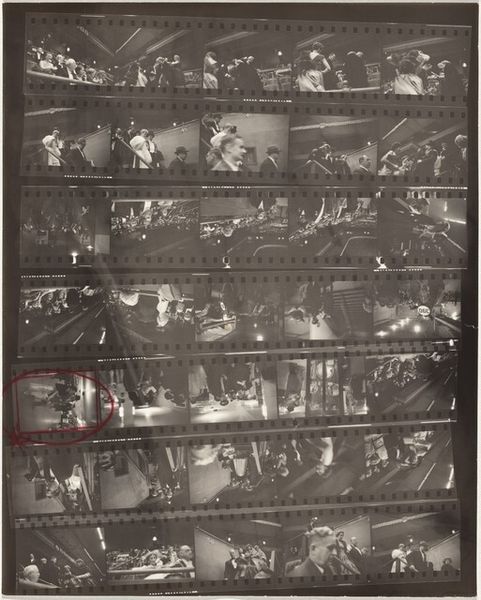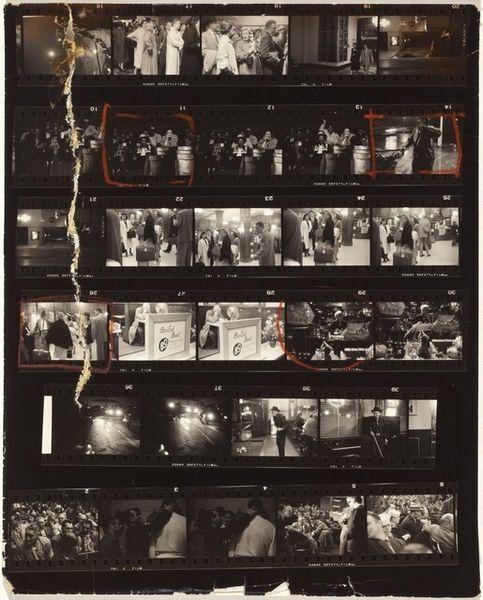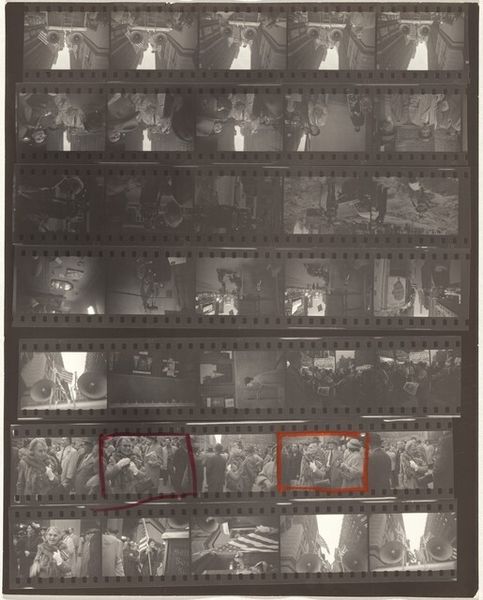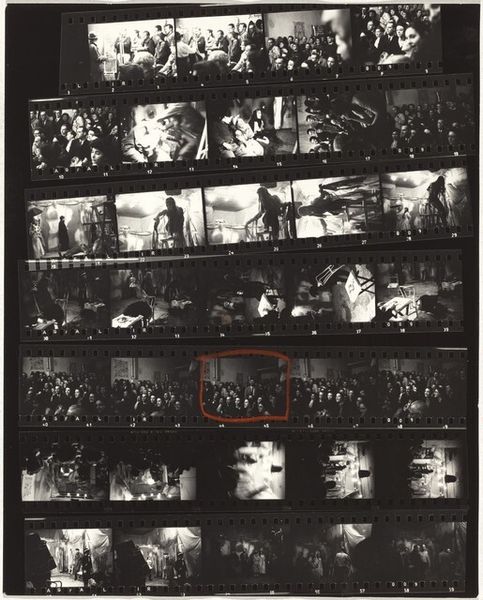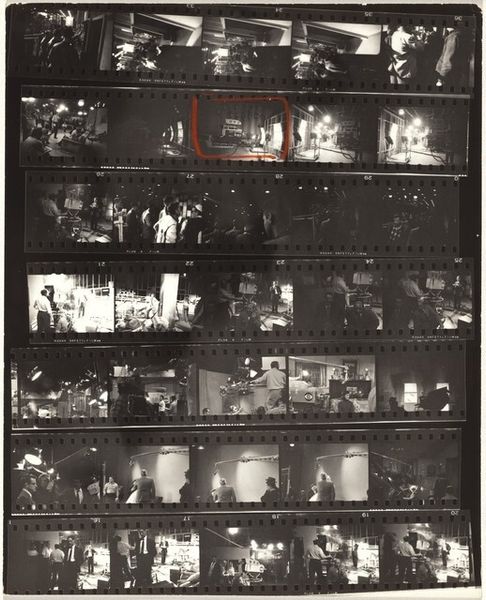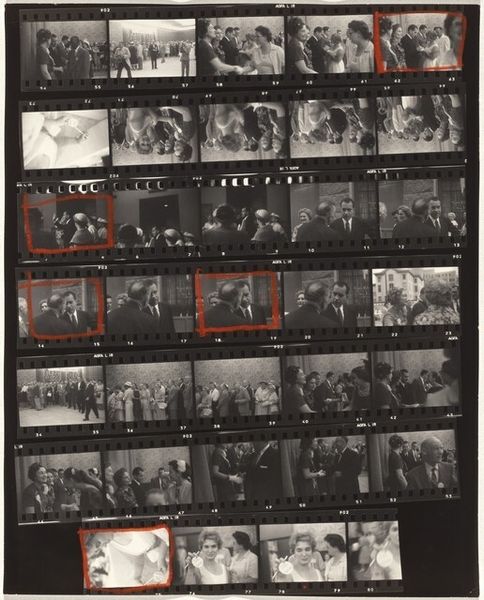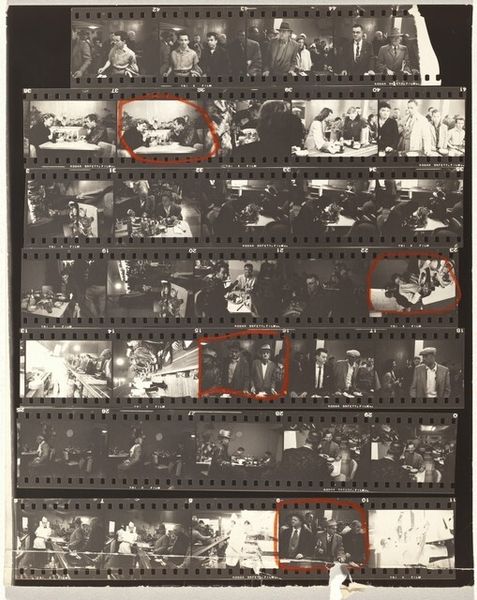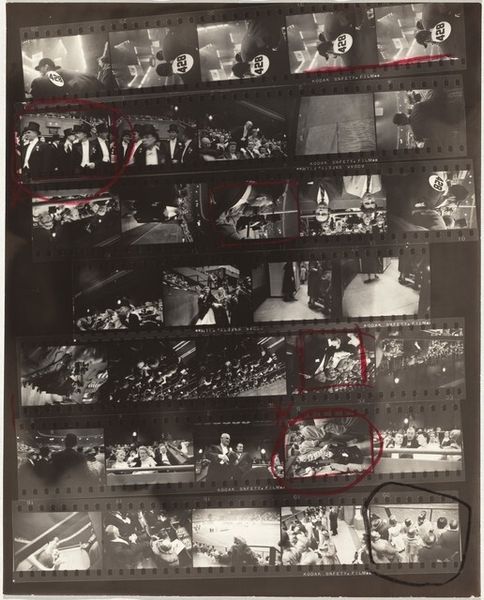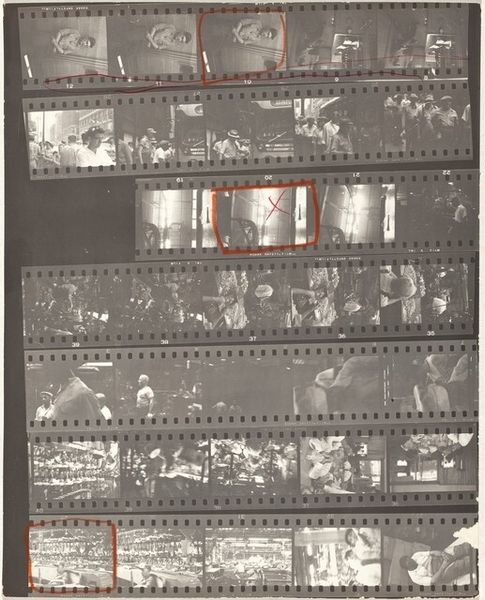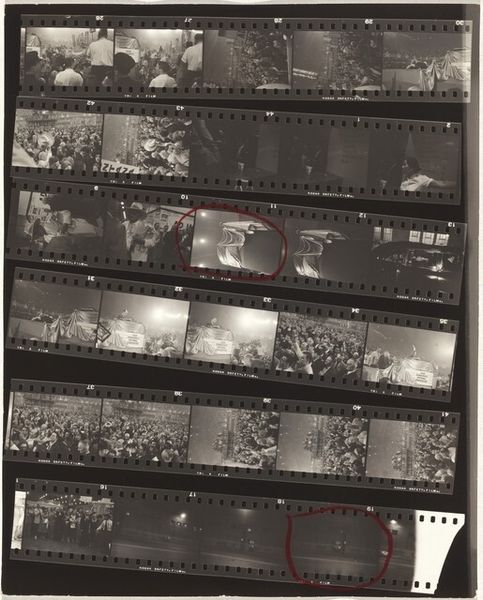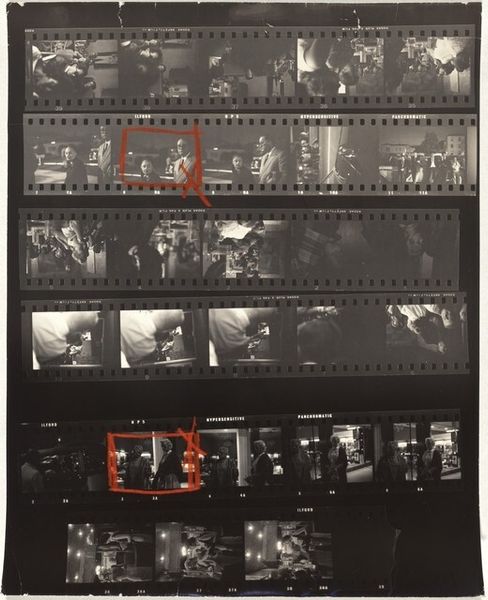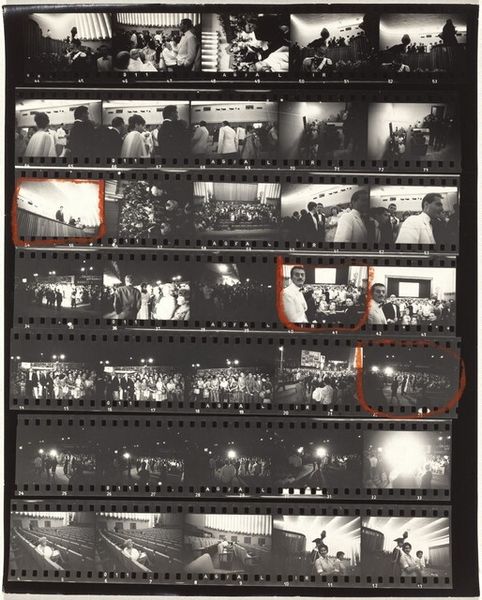
print, photography, gelatin-silver-print
#
portrait
#
print photography
#
contemporary
#
film photography
# print
#
social-realism
#
photography
#
culture event photography
#
gelatin-silver-print
Dimensions: overall: 25.2 x 20.2 cm (9 15/16 x 7 15/16 in.)
Copyright: National Gallery of Art: CC0 1.0
Editor: So, this gelatin silver print, "Venice, Italy 1," was captured by Robert Frank in 1964. It shows strips of film negatives stacked one above another to reveal, as far as I can see, blurred figures within possible performance halls. I am intrigued by how the film roll itself is presented as the final art piece and wonder how we are meant to read these photographs, both individually and as a sum of many parts? What is your read of the artwork, especially in the light of it being ‘just’ a roll of film and not photographs in the classic, gallery-type format? Curator: Precisely! Presenting the film roll challenges the conventional notion of photography as a finished, singular image. Consider the labor involved: the photographer's selection process, the darkroom technician's work, the materiality of the gelatin silver print itself. Frank isn't just capturing moments; he's revealing the means of photographic production. Why present the strips this way? Editor: It almost feels like a rejection of perfect imagery. Showing us the discards, as it were. Curator: Exactly. He disrupts the commodification of the perfect, easily consumed photograph. Are the markings on the selected frames perhaps notes of editing or directions for printing? They reveal further aspects of this labor and decision-making behind constructing an image, drawing attention to the physical nature of the print, its creation through materials and processes. It becomes a commentary on the consumption of images themselves. How does understanding the image’s creation affect our view of what is shown in the negatives themselves, do you think? Editor: That makes me consider the context too. 1964—the height of consumer culture. Could this be a critique of how easily images are made and disseminated, thereby questioning their true value? By leaving it on the roll we now have to question not only each image’s worth, but its value in relation to others on the roll and the value of images at that time? Curator: Precisely! Frank forces us to reconsider what we value in art. It's not just the subject, but the entire process—the labor, the materials, the cultural context—that shapes meaning. Editor: That’s given me a lot to consider. I came in thinking it was about performance and Venice itself, but it now strikes me as much more a piece about image production. Curator: And that is the strength of looking at the materials: it opens new avenues.
Comments
No comments
Be the first to comment and join the conversation on the ultimate creative platform.
